
One characteristic of these woods is a complete lack of ground vegetation except for lush growth of mosses that cover the boulder strewn forest floor. This makes the task of spotting these tiny charismatic birds, particularly the black and white males, relatively easy as they dash around in search of prey. However, the Pied Flycatcher, unlike the UK's other flycatcher species, does not use a regular perch from which to launch its attack on some unwary insect which makes it rather more tricky to select a spot to photograph them. Our other UK Flycatcher species is the Spotted Flycatcher which is sadly another bird that is sadly in rapid decline and shown, complete with prey, in the photograph below for comparison.
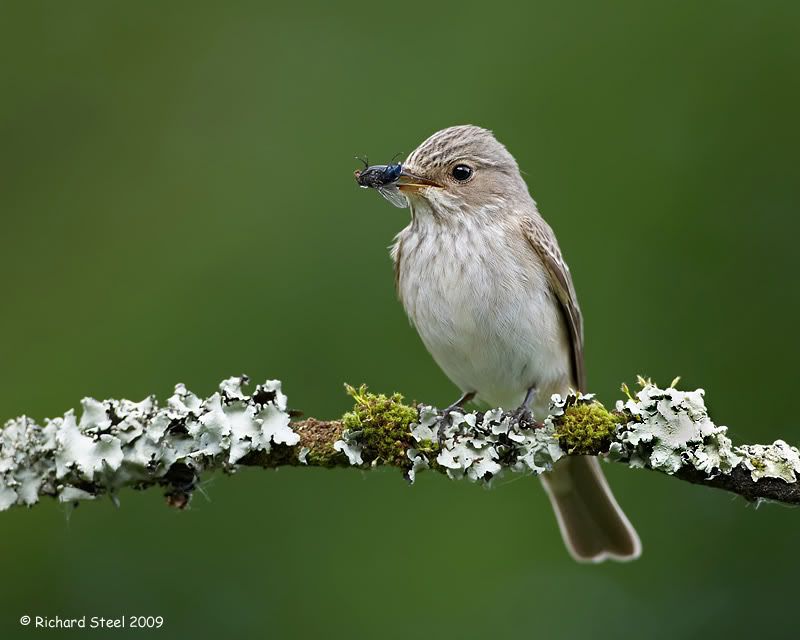
The key to photographing Pied Flycatchers is to find a nest. This is one of the very few birds I will photograph at the nest and so an extremely careful and considered approach is required. The welfare of the bird is always my primary consideration before any photo is taken. Timing becomes critical as the single brood go from hatching to fledging in two weeks around the end of May. After fledging the young and adults seem to completely disappear before embarking on their autumn migration back to Africa. I must admit I have not always got the timing right and last year got it spectacularly wrong resulting in a long journey for no results!
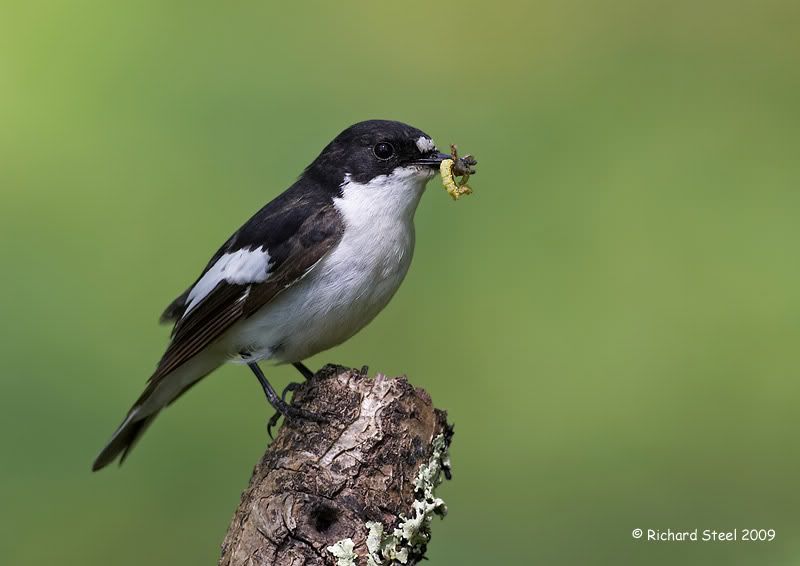
The Pied Flycatchers nest in tree holes, usually where a branch has snapped off the trunk, which are fairly common amongst the ancient oaks that are subject to the full force of the gales rushing in off the Atlantic. However, competition is high for these limited nesting sites with other species such as tits. Back in the late 70's and early 80's a concerted effort was made to provide nest boxes for the flycatchers, which they readily and successfully used, and the UK population showed some recovery. However, in recent years the populations have declined once more despite the availability of nest boxes remaining about the same. It appears the birds are struggling to respond to changes in climate and their arrival in the UK is now out of sync with late spring food availability. The birds have responded by laying eggs approximately 10 days earlier on average but this means that the adults have less time to recover from their long migration and are in generally poorer condition leading to reduced success. Unfortunately climate change appears to proceed at a much faster rate than evolutionary adaptation can respond with negative consequences.
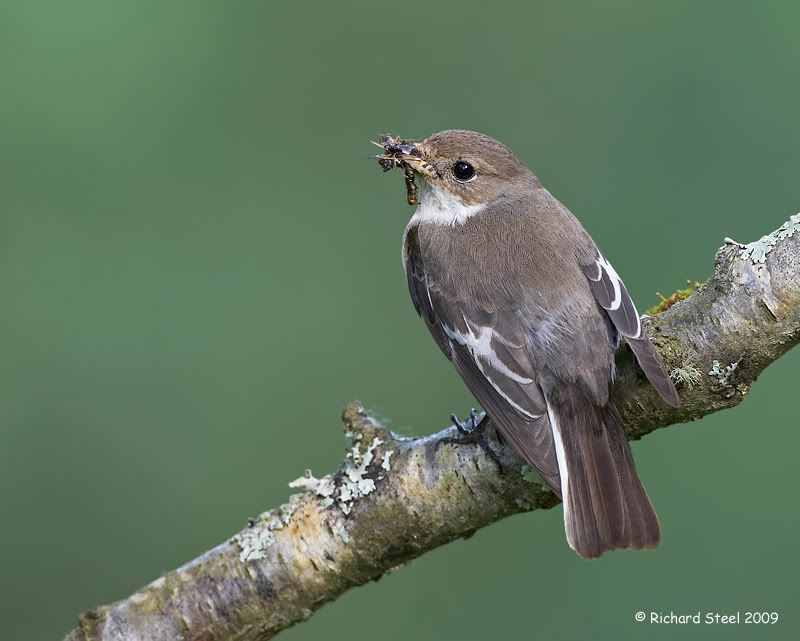
The site I visit has been subject to a long-term nest box study making it ideal for photography, particularly as the nest boxes are usually only 3-4ft above the ground. Once I find an active nestbox, I watch and wait until both birds are away foraging before quickly moving a 'pop-up' hide (blind) into position. I can then happily sit there photographing the birds without causing disturbance. Generally the brown and white females are more difficult to photograph as they tend to fly straight in to the nest box hole while the males tend to linger outside before entering.
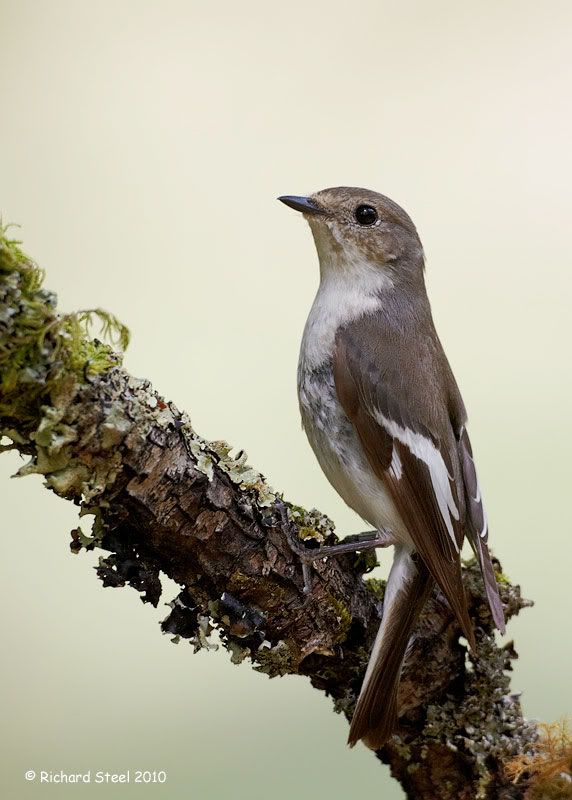
From a photography perspective the main problem is trying to achieve correct exposure of the black and white males under the constantly changing dappled light below the tree canopy. Keeping detail in the black feathers without over exposing the white ones certainly keeps the hands busy changing the camera settings. A perch that has good light on it, can 10 minutes later be plunged into dark shade. Conditions are made even more challenging if there is a breeze blowing the overhead tree canopy around which results in constantly moving patches of light across the birds and perches.

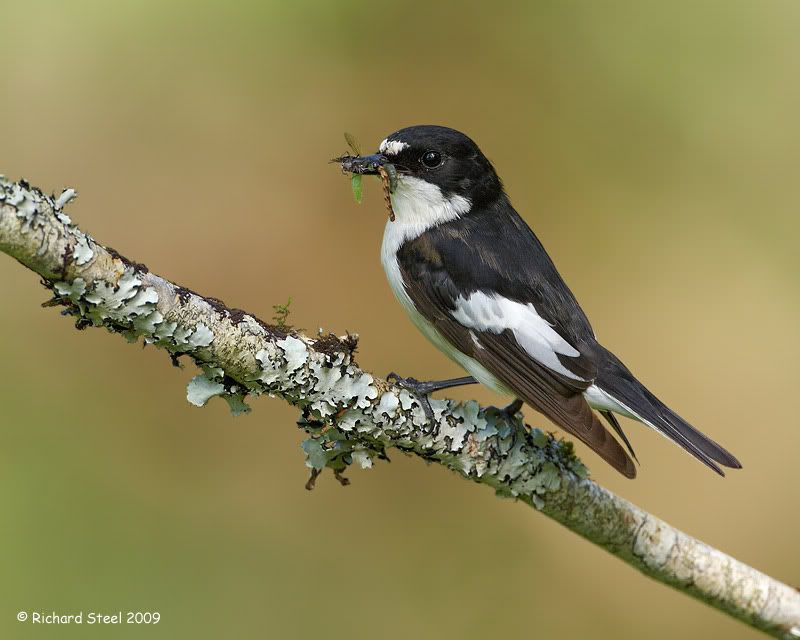
As if that was not enough to contend with, the swarms of local biting flies seem to ignore any repellent and always do their best to drain your blood. I know this doesn't sound like too much of fun day out but all these difficulties are more that compensated for by spending time in close proximity to these special little birds and sharing a brief moment and insight into their lives before they head once more back to Africa.

For my next and final post on the Western Oakwoods, I will be showing the most colourful of the summer migrant trio and the one with which I have spent most time, the Common Redstart.


Great bird and photos, Well done!
ReplyDeleteVery lovely images and informative article Rich.
ReplyDeleteFantastic photos! What a beautiful bird!
ReplyDeleteBeautiful flycatcher, lovely photos.
ReplyDeleteWonderful post and beautiful photos!
ReplyDelete...a beautiful bird and amazing photography! I really enjoyed this post.
ReplyDeleteThanks for the tips on getting great shots such as these!
ReplyDeleteBeautiful photography and a great post.
ReplyDeletedan
Exceptional images of a most beautiful bird! Terrific post!
ReplyDeleteThanks for the comments. Hopefully you will enjoy the next post on Redstarts which are incredibly beautiful birds.
ReplyDeleteSteve all I can say is brilliant. This article is so informative and the picture fantastic. I'm really enjoying reading and looking at your high quality work you are undertaking keep up the good work mate.
ReplyDeleteRegards
Richard Evans
Project Nestbox
Rich, your photography talents never cease to amaze me. You capture stunningly sharp images of birds in fantastic and interesting poses that go straight to the heart and mind of the viewer. Awesome!
ReplyDelete